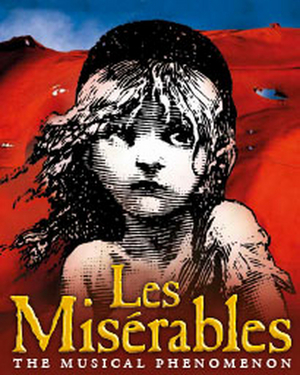Review: LES MISERABLES at the Tulsa Performing Arts Center

Whether you have been waiting for a first time to see Les Miserables, or if you're debating getting tickets for the 10th time, the US Tour production provides a chance to see the show at its very best.
Les Miserables is based on the Victor Hugo novel of the same name set in the years leading up to and following the Paris. It tells the story of ex-convict Jean Valjean, who repeatedly attempts to elude the capture of the uncompromising Inspector Javert. After a bishop's act of radical forgiveness, Valjean decides to make a new life for himself. He has finally started over when he encounters a factory worker named Fantine who has been forced into prostitution. As she is dying, he promises to care for her daughter, Cosette, who is living with an unscrupulous Innkeeper and his wife. Years pass, and the next generation of characters enter Valjean's sphere: the fiery Enjolras, who leads the revolutionary effort at the barricade, the young student, Marius, who falls in love with Cosette and must choose between romance and revolution, and the Inkeepers' daughter, Eponine, who is deeply infatuated with Marius even though her feelings remain unrequited.
The popularity of Les Mis is enduring: it has been seen by more than 120 million people in 52 countries, and it has been performed in 22 different languages. It was adapted into a movie in 2012, is the longest-running musical in the West End, and the second-longest-running in the entire world. While the story clearly resonates deeply across lines of nationality, it is truly the music that truly allows the show to transcend cultural boundaries so seamlessly. Les Mis runs for nearly three hours and there are almost no spoken lines. Originally conceived as a concept album, the musical's score was written by Claude-Michel Schönberg with original lyrics by Alain Boublil and Jean-Marc Natel and English translations by Herbert Kretzmer. These lyrics serve the important purpose of pushing the story along and conveying the intense emotions of the characters, but the melodies themselves serve as the affective meat of the show.
Yes, the set pieces for Les Mis are striking and capture the simultaneously gritty and elegant landscape of the show. They are backed by subtly animated projections based on Victor Hugo's paintings which transport us not just back in time but through space, as they move and distort our perception of movement. (Notably for fans of the show, the production lacks a longstanding fixture of the play's staging: a revolving platform embedded in the stage itself.) However, more than almost any other show of comparable popularity, Les Mis beautifully engages in the thing that musicals do best: the intertwining, repurposing, and emerging anew of musical sequences and refrains. This potential to sow seeds of powerful melodies early on in a show and then bring them back with simultaneous novelty and familiarity is a large part of what makes musicals such a uniquely expressive form, and Les Mis embodies the phenomenon with exceptional grace. The constellation of melodies in Les Mis are not just catchy, but they combine with one another and resurface at moments which highlight the re-emergence of key ideas and encounters. This allows us to viscerally experience the sense of continuity that is so crucial to the story's theme and purpose - it is what makes the show a classic.
Of course, the musical heights of the show cannot be realized without a stellar cast, and this particular group of performers honored the score with both incredible vocals and powerful dramatic interpretation. Paige Smallwood as Eponine and Joshua Grosso as Marius were two standouts: Smallwood's yearning belt provided a new standard of excellence for her classic solo, "On My Own", and Grosso's moments of puppy-love humor charmingly punctuated his graceful vocals without self-indulgence. Jillian Butler as Cosette skillfully complemented these two, creating an exemplary trio of lovesickness and gorgeous harmonies. Jimmy Smagula and Allison Guinn Madame seemed to be having an absolutely fabulous time making the most of their roles' over-the-top ridiculousness as the innkeeping Thenardiers. Mary Kate Moore gave a magnetic and vocally immaculate portrayal of Fantine, and Josh Davis highlighted the vicious, overwrought side of Javert through a snarling and forceful performance.
Perhaps most notably, on opening night at the Tulsa PAC, Jean Valjean was performed by Andrew Maughan, who usually plays the Bishop, and Enjolras was played by Brett Stoelker, who is billed as a Swing. Even discounting the fact that these two were playing roles that are typically not theirs, they carried the show with astounding energy and vocal chops. Never descending into overacting or exaggeration but providing a steady gravity to the show's most gut-wrenching moments, Maughan had me gripping the edge of my seat during his first five minutes on stage. Maughan was a truly excellent Valjean, stunning the audience with his vocal expertise again and again from "Who Am I?" to a rendition of "Bring Him Home" that had some members of the audience, quite frustratingly, singing along. Stoelker as Enjolras performed the show's most rousing anthems with the ferocious energy appropriate to his character and a voice that elegantly upheld the grandeur of the score.
Les Mis has its moments of melodrama - much of it is melodrama - but even those moments cannot help but become more resonant with each viewing, as the melodies age, interact, repeat, and re-emerge once again. It is worth experiencing at least once if only to appreciate this undeniably powerful way to tell a story.
Get tickets for Les Mis presented by Celebrity Attractions in Tulsa here and see it when it comes to your city here.
Reader Reviews

Videos

